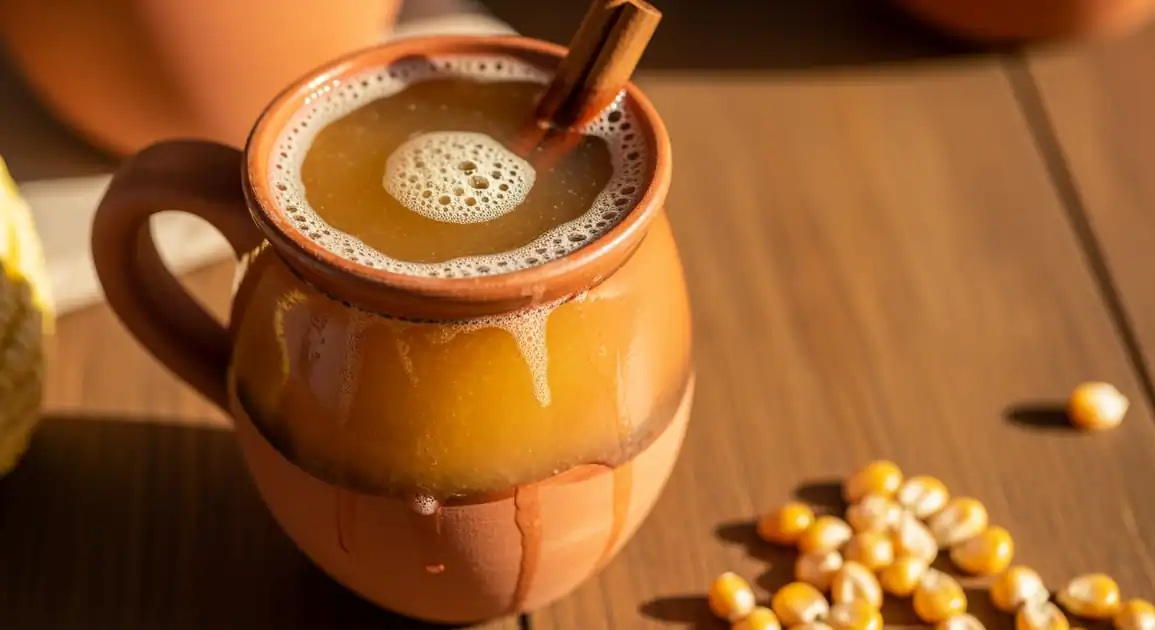Chicha de Jora
Chicha de Jora

Description
In Lima, Peru's capital, chicha de jora represents a connection to the country's Andean roots amid the cosmopolitan environment. Though not originally from the coastal region, it has been adapted and incorporated into Lima's diverse culinary landscape. Traditional picanterías, especially in historic districts and those specializing in regional cuisine, serve authentic versions alongside innovative modern interpretations found in the city's renowned restaurant scene.
Dietary Information
Serving information
Serving style
In more traditional establishments, served in clay cups ('caporales') or glasses. Upscale restaurants may present it in more elegant glassware. Often accompanied by cancha (toasted corn kernels) or habas (toasted fava beans).
Quick facts
Most traditional picanterías serve chicha from 12 PM - 9 PM, with some upscale restaurants offering it during their full service hours (typically 12 PM - 11 PM).
Safety Tips
What to Look For
-
Fresh preparation with regular turnover
Quality chicha is consumed quickly and made fresh regularly. Busy establishments usually have better turnover, ensuring freshness.
-
Clean serving containers and traditional vessels
Properly maintained clay vessels ('chombas') for fermentation and clean glasses or clay cups ('caporales') for serving indicate good hygiene practices.
-
Clear golden-amber color with slight cloudiness
Good chicha has a characteristic color and some cloudiness from fermentation, but shouldn't be excessively murky or have large particles floating in it.
-
Mild, pleasant sweet-sour aroma
Fresh chicha has a characteristic smell combining corn sweetness with light fermentation notes, without strong sourness or off-odors.
-
Preparation visible or explained willingly
Transparent preparation methods are a good sign. Many traditional vendors are proud of their chicha and happy to explain their process.
What to avoid
-
Excessively sour smell or taste
A strong vinegary smell indicates over-fermentation, which can cause stomach discomfort and indicates poor quality control.
-
Large visible sediment or floating particles
While some cloudiness is normal, excessive sediment or floating material can indicate poor filtration or contamination.
-
Chicha stored in dirty or uncovered containers
Proper storage in clean, covered containers is essential for preventing contamination.
-
Vendors unwilling to answer questions about preparation
Quality vendors are usually transparent about their preparation methods and fermentation time.
-
Unnaturally bright color or artificial appearance
Traditional chicha has a natural golden-amber color; artificially bright yellow might indicate coloring additives.
Price information
Price range
Budget tips
- Traditional picanterías in districts like Rímac and Barranco often offer better value than upscale restaurants, with prices around 5-8 PEN per serving.
- Some traditional restaurants offer complimentary chicha with set lunch menus ('menú').
- Markets like Mercado San Pedro offer affordable chicha from 5 PEN.
- Look for 'chicherías' specifically rather than general restaurants for better quality-to-price ratio.
Value indicators
- House-made rather than commercially produced versions.
- Served in traditional vessels rather than regular glassware.
- Establishments that specialize in regional Andean cuisine.
- Places that offer information about their chicha's origin and preparation method.
Where to Find This Dish
Barranco
This bohemian district houses several traditional picanterías and modern restaurants serving quality chicha.
Plaza de Barranco, Bajada de los Baños
Lunch hours, Weekend afternoons
Centro Histórico
Lima's historic center contains some of the oldest establishments serving traditional chicha.
Plaza Mayor, Barrio Chino
Midday, Afternoon
Surquillo Market Area
Around the traditional market, several small establishments serve authentic chicha.
Mercado de Surquillo
Morning, Midday
Rímac
This traditional district maintains some of Lima's most authentic chicha traditions.
Alameda de los Descalzos
Weekends, Festival days
Vendor Tips
- In Lima, seek out establishments that specifically advertise regional Andean cuisine for more authentic chicha.
- Ask if the chicha is house-made ('hecha en casa') rather than commercially produced.
- Well-established picanterías with long histories often have refined their chicha recipes over generations.
How to Order
Regional Variations
-
Artisanal Restaurant Chicha
(Chicha Artesanal de Restaurante)
Upscale restaurants in Lima often create refined versions with consistent flavor profiles and elegant presentation.
-
Traditional Picantería Style
(Chicha de Picantería Tradicional)
Found in establishments with roots in Andean regions, particularly those with connections to Arequipa, Cusco, or Ayacucho.
-
Modern Mixology Versions
(Chicha de Coctelería Moderna)
Some contemporary bars incorporate chicha into cocktails or create clarified or refined versions with modern techniques.
Cultural context
History
Chicha de Jora's origin traces back over 5,000 years, with significant cultural importance during the Inca Empire. According to legend, during Inca ruler Tupac Yupanqui's reign, rain soaked stored corn, causing it to germinate. Rather than waste it, it was dried and used to make a beverage discovered to be flavorful and mildly intoxicating. The Incas considered it sacred, using it for offerings to gods and in important ceremonies. Despite Spanish colonization attempts to suppress indigenous practices, chicha production persisted in rural communities, becoming a symbol of cultural resistance and preservation of pre-Columbian traditions.
Local significance
In Lima, chicha de jora represents Peru's cultural heritage and connects the coastal capital to its Andean roots. It serves as a cultural bridge, bringing highland traditions to the metropolitan setting and preserving indigenous culinary practices in a modernizing urban environment.
Eating customs
- In Lima, chicha is typically consumed as an accompaniment to traditional Peruvian dishes rather than on its own.
- Modern restaurants may serve it in smaller portions as an aperitif or with tasting menus.
- Often paired with traditional Limeño anticuchos (skewered meat) or causa (potato dish).